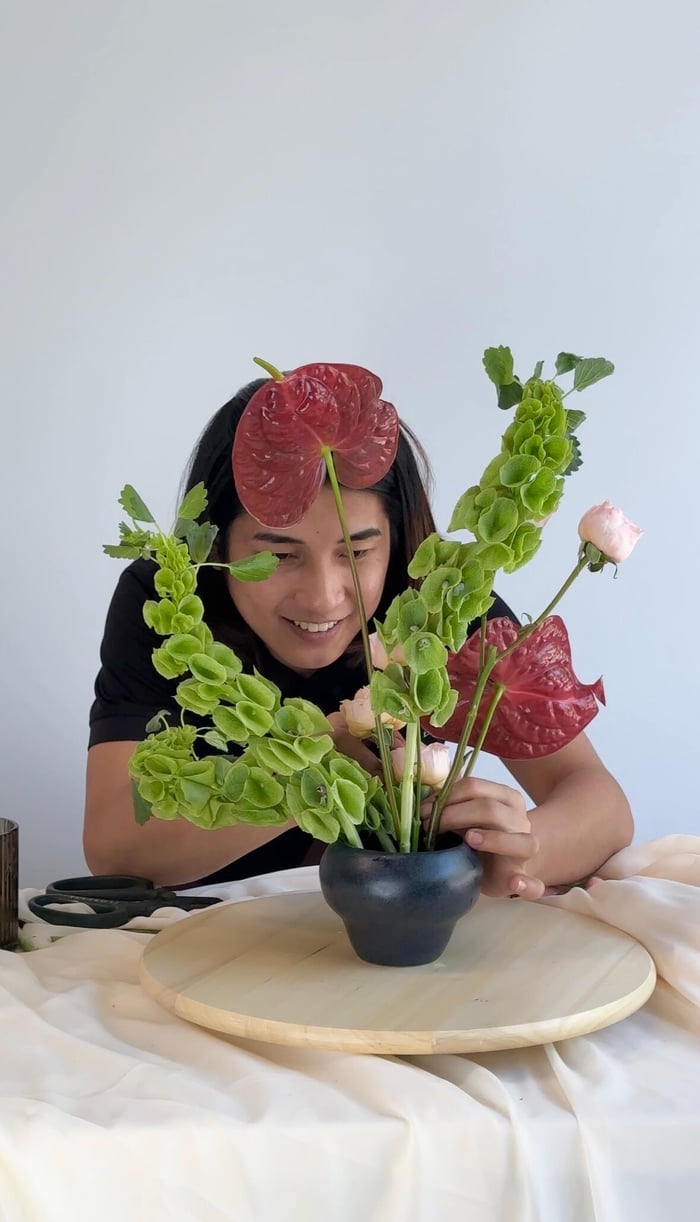Ikebana, the traditional Japanese art of flower arrangement, transcends mere decoration; it embodies harmony, balance, and a deep connection to nature. Whether you’re looking to enhance your home’s aesthetic or seeking a meditative practice, exploring Ikebana can be a rewarding experience. This guide will walk you through the basics of this beautiful art form.

Ikebana, which translates to “arranging flowers,” is not just about pretty bouquets. It’s a celebration of nature and an invitation to observe the world through a different lens. This ancient practice, dating back centuries, invites you to engage with flowers and foliage in a meaningful way. While Western arrangements might focus on color and abundance, Ikebana emphasizes line, balance, and space, creating a visual poem that speaks to the heart.
1. Embrace Line and Space: In Ikebana, the arrangement’s shape and lines are paramount. Use negative space intentionally—it’s just as important as the flowers themselves. Let your arrangement breathe!
- Heaven (Ten): The tallest stem, representing the heavens.
- Earth (Chi): The middle height, symbolizing the grounding earth.
- Human (Jin): The shortest element, reflecting our place in the world.
- Kenzan: The spiky base that will anchor your creation. It’s the secret weapon of Ikebana!
- Vase: Opt for a simple, elegant vessel that complements your design.
- Floral scissors: Sharp tools are essential for clean cuts and happy blooms.
- Focal Flowers: Pick a couple of stunning blooms to steal the spotlight.
- Filler Flowers: These should support your focal flowers, adding depth without stealing the show.
- Foliage: Use greenery to create texture and visual interest.
- Prepare Your Space: Find a quiet nook where you can immerse yourself in the process. Clear your mind and let the creativity flow.
- Trim Those Stems: Cut your flowers at a diagonal angle—this ensures they drink up plenty of water.
- Set Up the Kenzan: Secure your kenzan in the vase. It’s the foundation of your masterpiece!
- Build the Structure:
- Start with your tallest stem (Heaven) and place it in the kenzan.
- Add the middle-height stem (Earth) next.
- Finish with the shortest stem (Human) to complete your triangular design.
5. Layer in Filler and Foliage: Now, let your creativity run wild! Add smaller flowers and greenery, playing with shapes and colors until you find the perfect balance.
6. Step Back and Reflect: Take a moment to step back and admire your creation. Adjust as needed—trust your instincts!
To keep your arrangement looking fresh and vibrant:
Change the water regularly to keep those blooms happy.
Trim the stems every few days for optimal hydration.
Remove any wilting flowers to maintain your masterpiece’s beauty.







